Walking up to Otium in Downtown Los Angeles can feel like a jump into the future. There’s The Broad museum, just next door, whose wavy, stark white shell is right at home next to Frank Gehry’s metal-clad Walt Disney Concert Hall. After rounding a corner, Otium’s wood, metal and glass box frame comes into view. Jutting off to its side is a sun deck crowded with tall, white cylindrical towers covered in plants. At that point, a visitor would notice the mature olive grove to the left, seemingly out of place but signaling something bigger had been happening here. If anyone had been wondering about the future of farming, surely this would be a good place to start learning.
Chef and owner Timothy Hollingsworth was tapped to helm Otium, which is connected to its museum neighbor, in 2016. A James Beard Award-winner and French Laundry alum, Hollingsworth has been on a quest to pioneer and set the example for urban farming and does so with his partners, L.A. Urban Farms, who are the proprietors of those produce-laden towers.
Hollingsworth’s relationship with L.A. Urban Farms began about three years ago. “We had the opportunity to talk about urban gardening and Niels, from the bat, taught me a ton,” he tells me, referring to Niels Thorlaksson, a partner at L.A. Urban Farms.
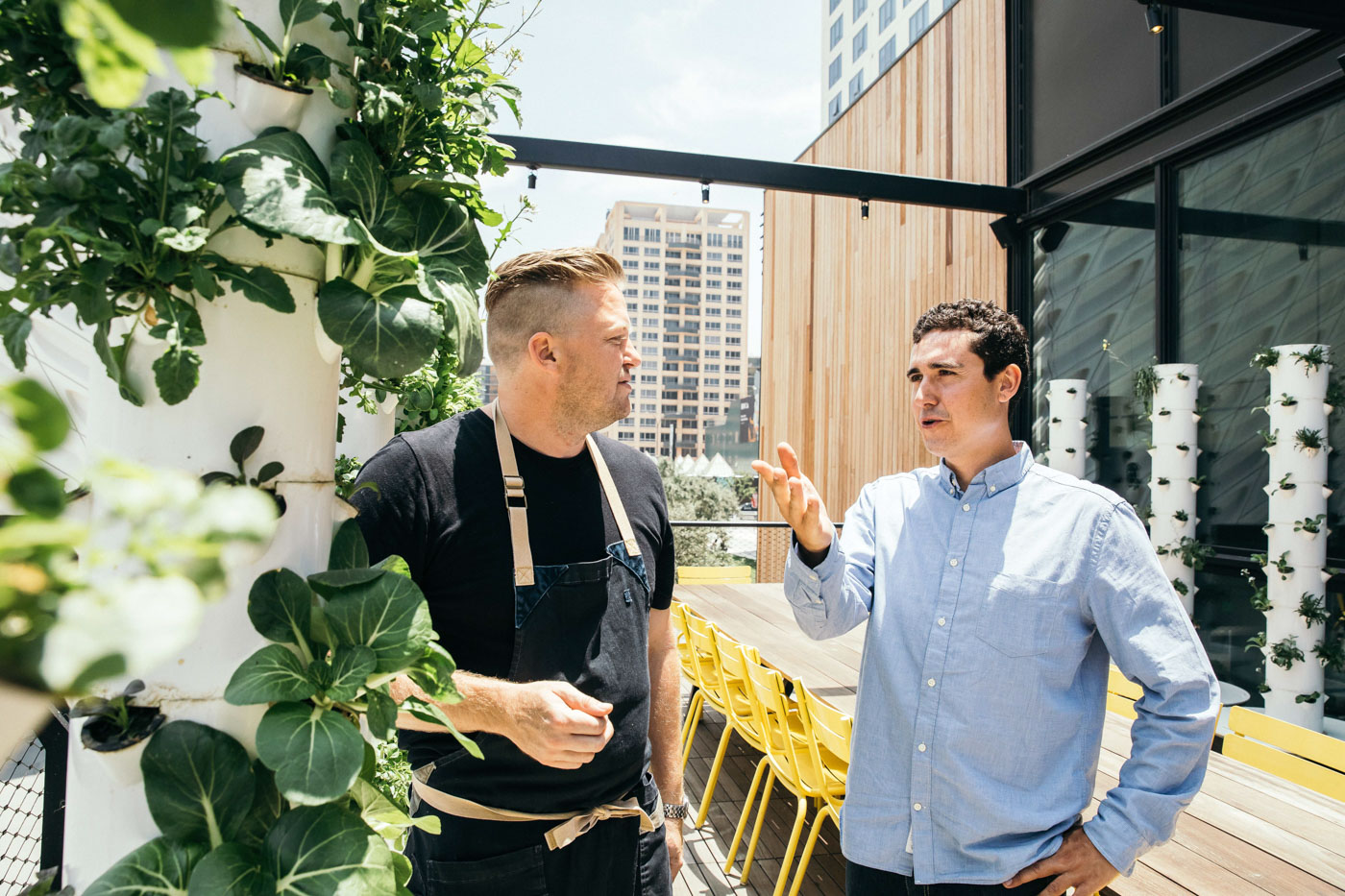
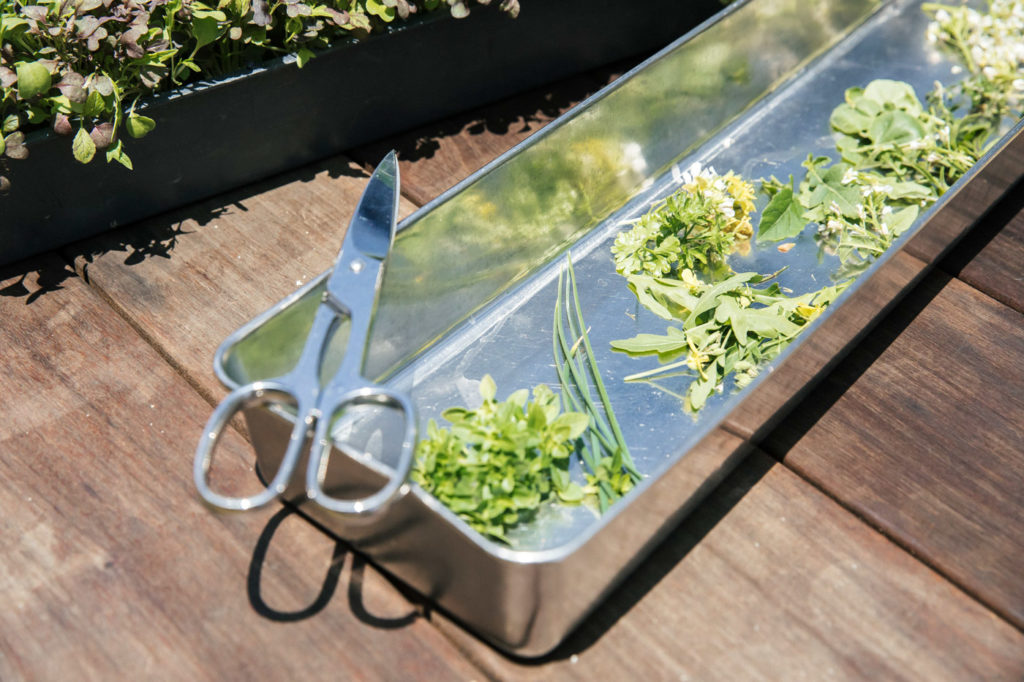
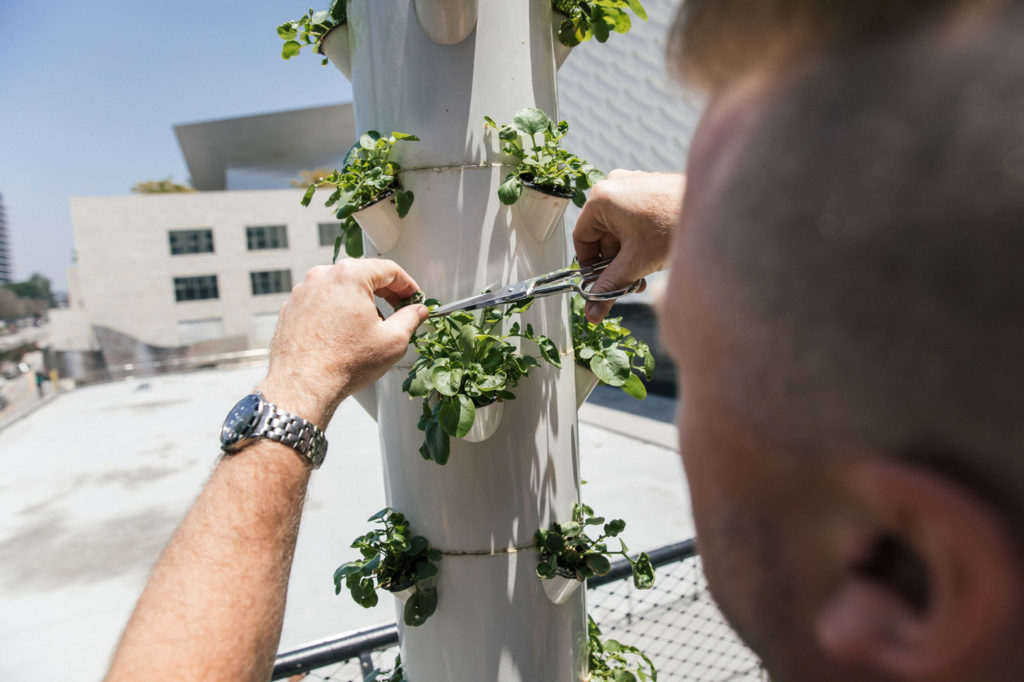
“I took two towers and put them at my house to test them out. We had some great successes and failures, just because of the climate of my particular apartment. It gets tons of heat and wind, so it was a little tougher. Initially, I worried the conditions would be the same up on Otium’s deck, but it turns out my apartment was just a uniquely harsh area,” he laughs.
It didn’t take long for the produce grown in the towers to flourish. A lot of this can be attributed to Los Angeles’ climate, Thorlaksson explains. “L.A. is great because we have very little fluctuation in seasons. Year-round we can produce almost anything—our winters are so mild, as are our summers, so we’re taking advantage of the fact that we’re growing outdoors. Normally, hydroponics is something you see indoors [in] a controlled environment, so we’re lucky we don’t have to be limited and can take advantage of the sun and the weather.”
Hollingsworth adds that this climatic advantage is exactly why L.A. Urban Farms’ message is so important. “For those same reasons, it’s probably just as easy to do traditional gardening as well. But there are great benefits to urban farming, for people who live in dense areas or apartments. Also, water is an issue in Southern California, and you save a lot by farming vertically.”
The way the towers work is this: L.A. Urban farms starts growing the plant in small trays, back at a nursery, using non-GMO and organic seeds only. They let them grow for about two weeks, then the plants are transported to the tower. From there, it’s up to the client on how much intervention they want from L.A. Urban Farms; clients can contract for a one of their farmers to maintain and grow the plant, they can ask for tutorials, and they can grow and harvest the plant all on their own, which both Hollingsworth and Thorlaksson note takes a decent amount of gardening skills.
“I tended to and harvested from my own garden at the French Laundry, and I still had to be taught and nurtured to be able to grow these plants,” Hollingsworth says.
Once the growing plant is in the tower without any soil, the aeroponic system takes over with at least ninety percent more water efficiency than if it was grown in the ground, Thorlaksson says. This has a twofold effect. “We are recapturing the water. We water the plants, and then the water collects in the bottom, and we reuse it or it evaporates. The tower sends water to the top, then it trickles down and hits the roots of all the plants inside. It hits the bottom, the timer turns off, and the plants breathe. So there is a contrast between the roots and the plants being highly oxygenated. That means we’re conserving but also growing thirty to fifty percent faster than in the ground. And since we’re growing vertically, we can produce more plants in the space we’re using.”

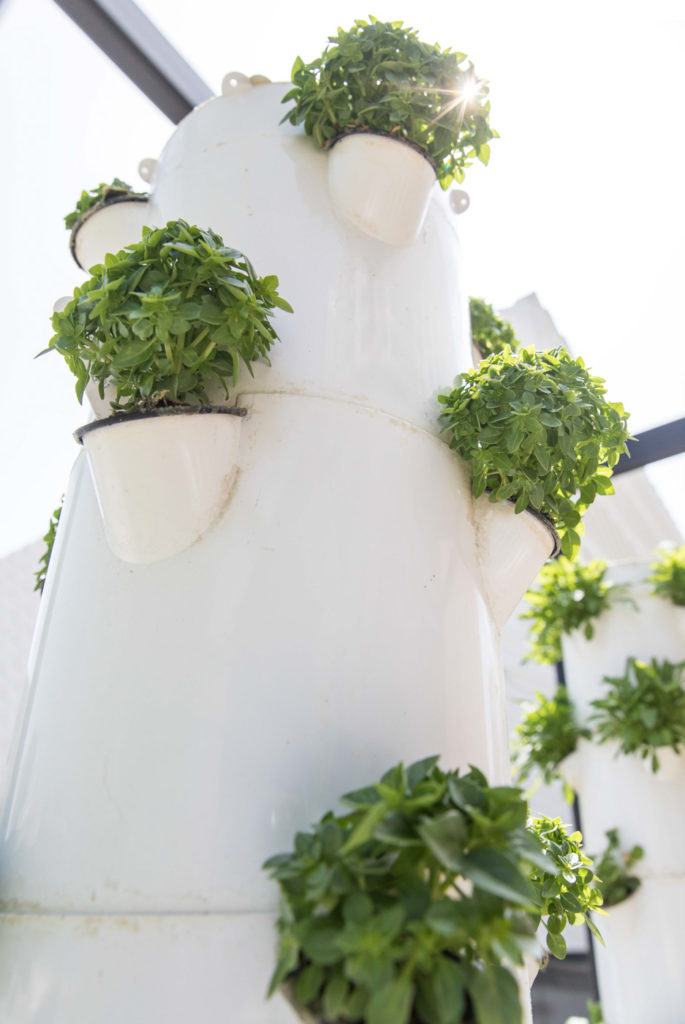
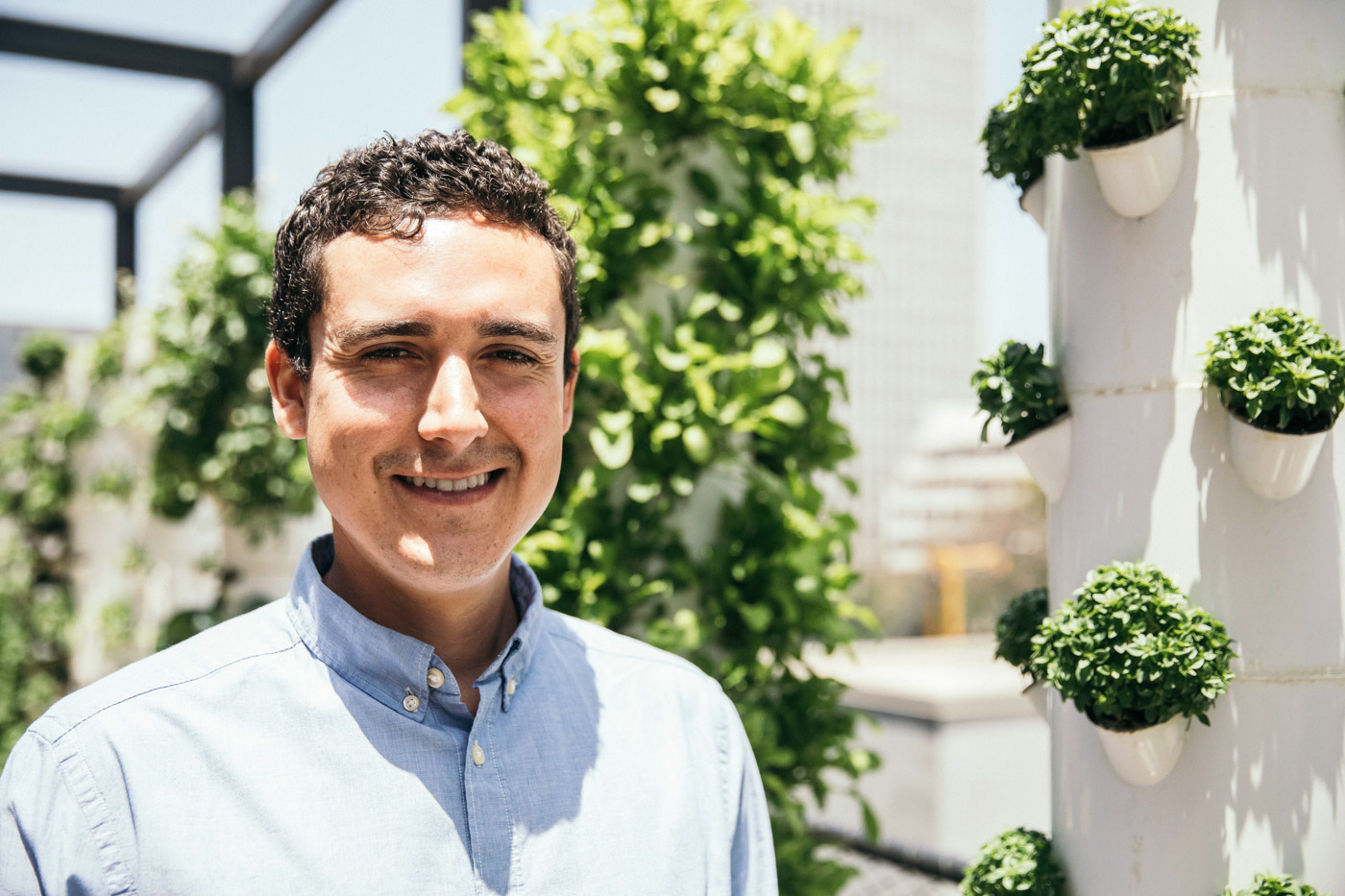
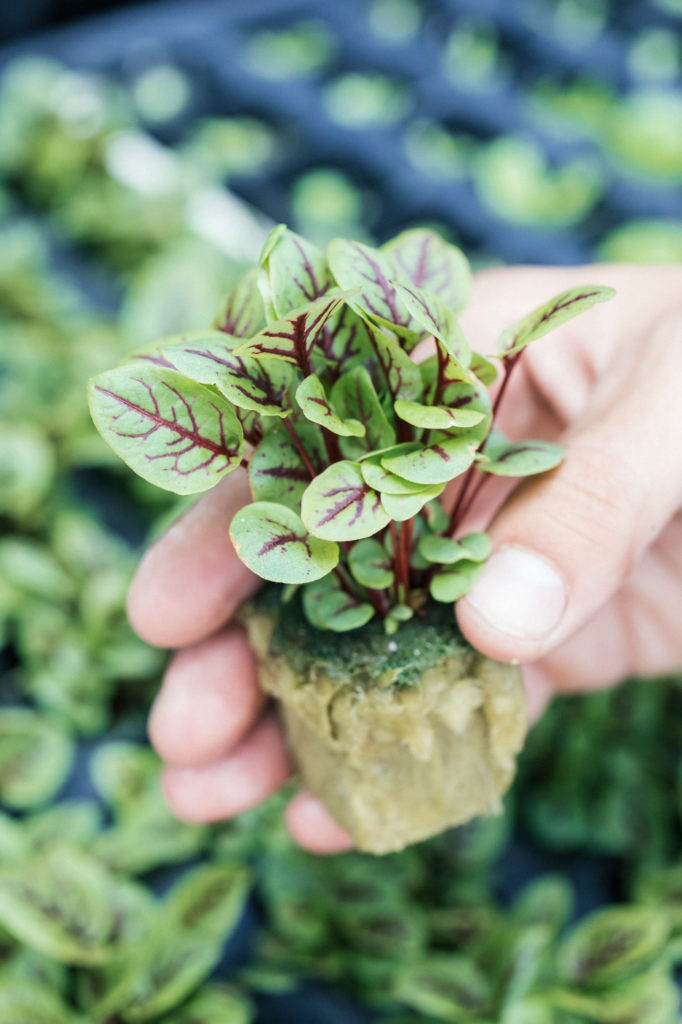
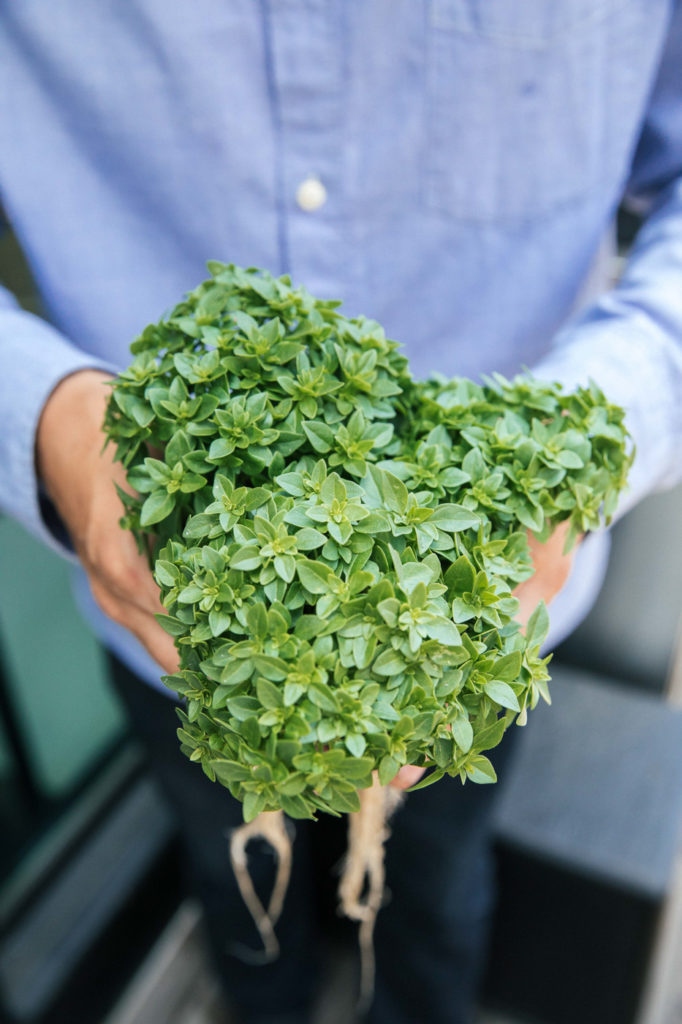
They can grow almost anything that comes out of the ground and do so without pesticides. Thorlaksson begins to rattle off a list of produce including fifty to sixty types of leafy greens (lettuce, kale, arugula, cabbage), basil, edible flowers, herbs, tomatoes, peppers, squash, cucumbers and more.
Does anything not work? Hollingsworth suggests root vegetables, but Thorlaksson immediately counters with an example. “Actually, I’ve done beets before! They just don’t grow perfectly round and take the shape of the tower—they’re round on the top and cylindrical all around. It’s a little weird, but they taste just like beets!” he beams as everyone at the table starts laughing at the thought of a can-shaped beet.
Most of L.A. Urban Farms’ clients are families and homes, Thorlaksson says, but he counts a number of hotels, schools—UCLA, USC and schools in Santa Monica and Watts, for example—and other restaurants as customers too, like Broken Spanish and Craig’s, both in Los Angeles. For families, the benefit is almost immediate; many are able to source their entire produce needs and the initial investment of $525 for one tower, not including gardening seedlings and services. For restaurants, depending on how big they are, there’s a strong philosophical and creative component.
“The nice thing about growing your own vegetables is you can choose how you want to use them and at what stage,” Hollingsworth instructs. “For instance, if you look at nasturtium leaves… maybe I don’t want a big one; I want a small one for a specific dish. For the bok choy, maybe I want larger leaves and I want to cut them down and use the ribs for something and the leaves for something else—having the entire plant at various stages gives us those options. It figures into my creative process, moreso as I see the plant growing. Another time, a particular plant grows faster than expected and I’ll have think to utilize it a different way than I originally intended.”
The yield from Otium’s thirty towers doesn’t fulfill the needs of an entire restaurant, but their significance manifests in other ways. Hollingsworth explains there are certain harvests where they have an abundance of produce. It won’t last months or weeks, so they have to use it judiciously and will put special things on the menu that showcase those ingredients. But on a regular basis, they’ll be able to use certain greens or herbs as ingredients throughout the menu.
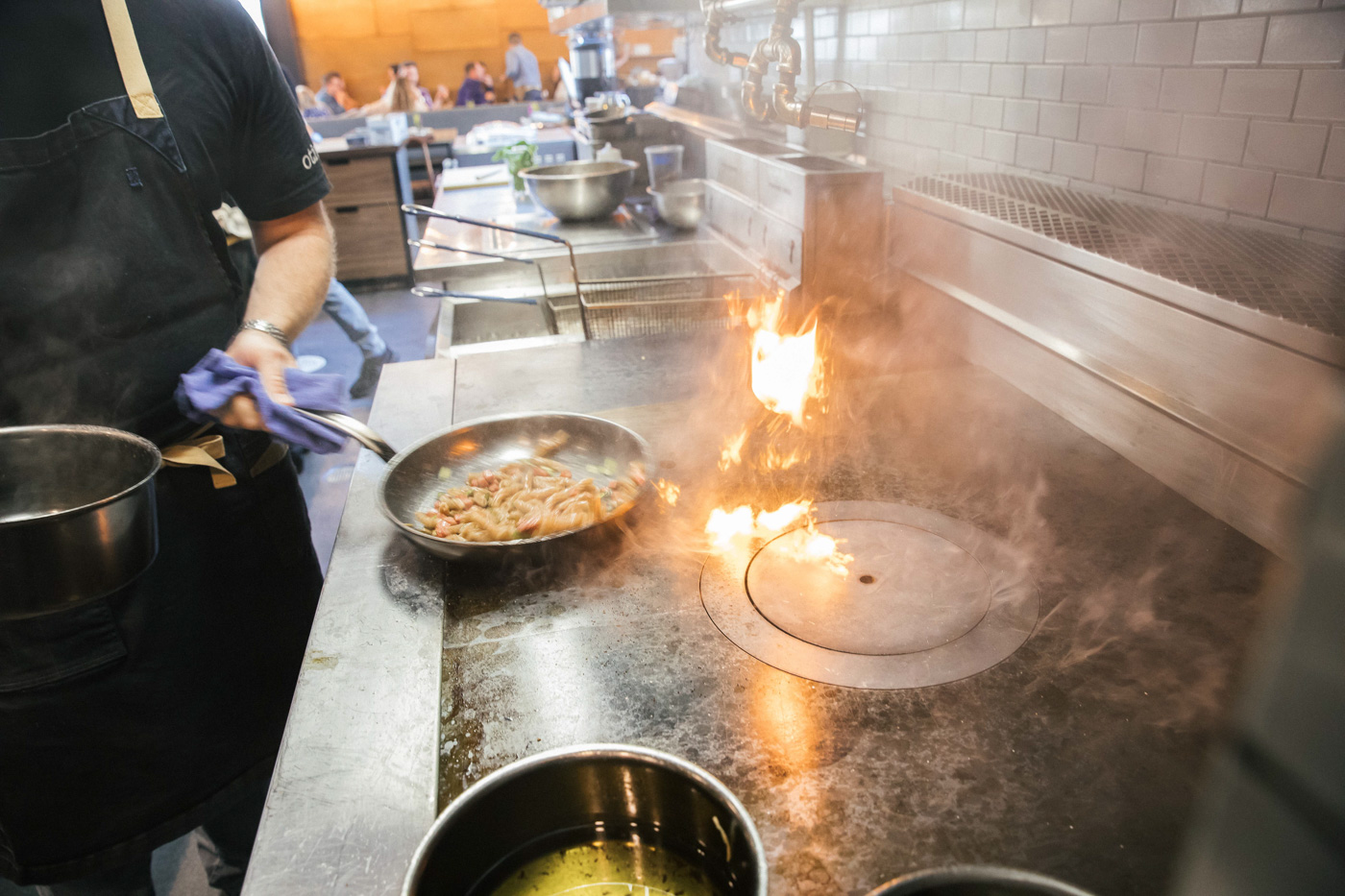
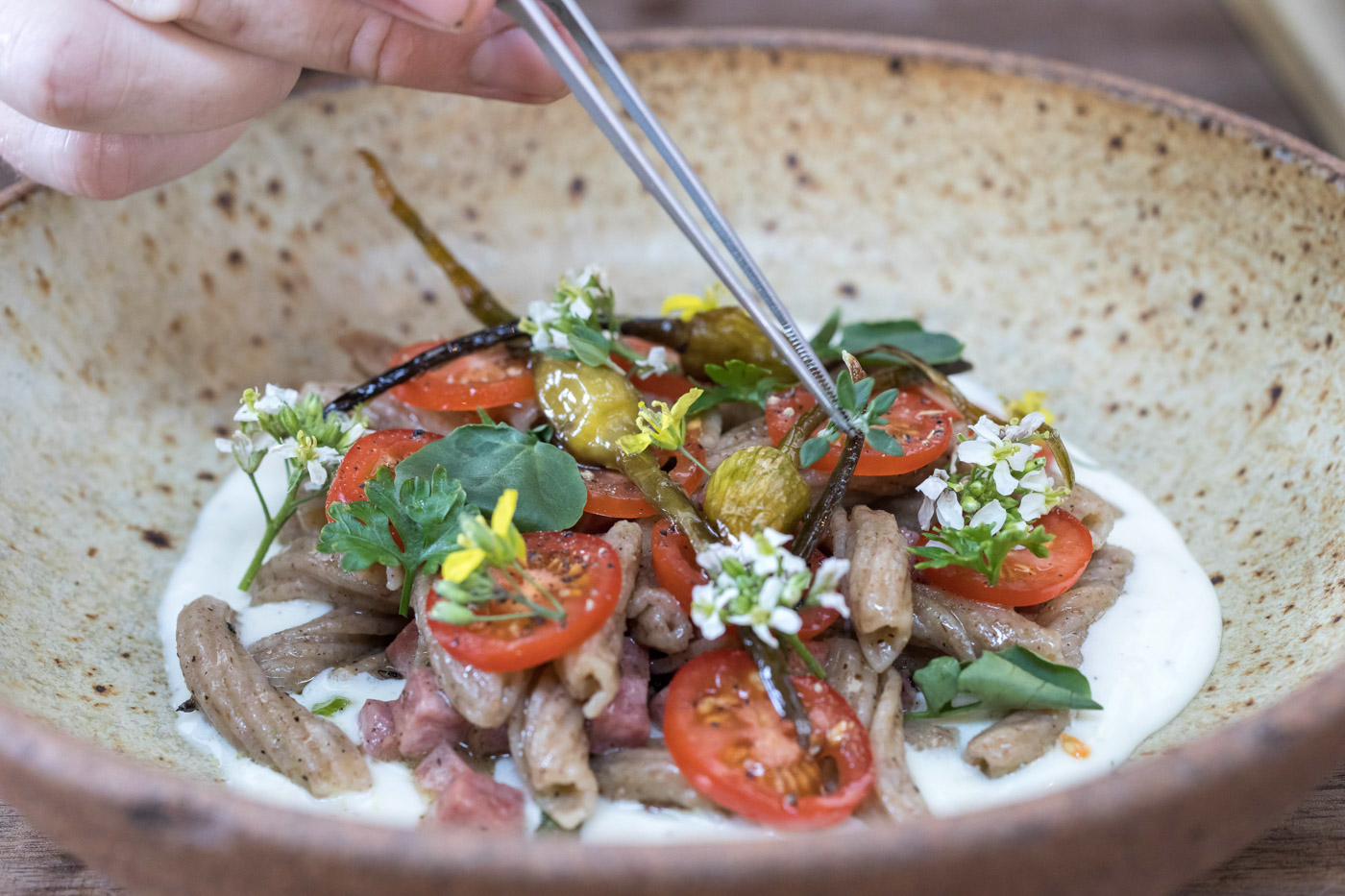
“It’s almost more important for the philosophy and story for the restaurant and kitchen,” Thorlaksson opines. “More that it’s incorporated at least one ingredient, so you think, ‘That would have been missing if it wasn’t there.’” For both L.A. Urban Farms and Hollingsworth, restaurants are on the front lines of food philosophy and serve as an example to the dining public.
“As a chef, personally, and also to teach staff, it’s important for everyone to learn the growing cycle of plants and to connect you where your food comes from. The fact that we’re on a bridge in Downtown L.A. and every single thing around us is concrete, the fact that you’re able to go around and clip your scissors and harvest flowers or herbs or greens is important. In an urban environment it’s impressive to see all these plants around you and also that some of the ingredients on the menu are being farmed there. It inspires people and hopefully that sticks.”
For Thorlaksson, as long as there’s unused space, there is room for urban farming. “It’s in our DNA to grow things,” he says. “Whether we like it or not, our ancestors did it to stay alive, and it’s part of us. I felt the connection and I felt that joy when I started gardening, so I encourage others to do it too.”
Thorlaksson thinks the possibilities for the future are endless. “There are so many backyards, so many restaurants, so many empty spaces, and so many mouths to feed. We should be encouraging urban farming and trying to find new ways to feed ourselves, grow our food sustainably and responsibly and in a way that brings us joy. I wish we could do that with animals,” he wonders. “But that’s a tough one.”





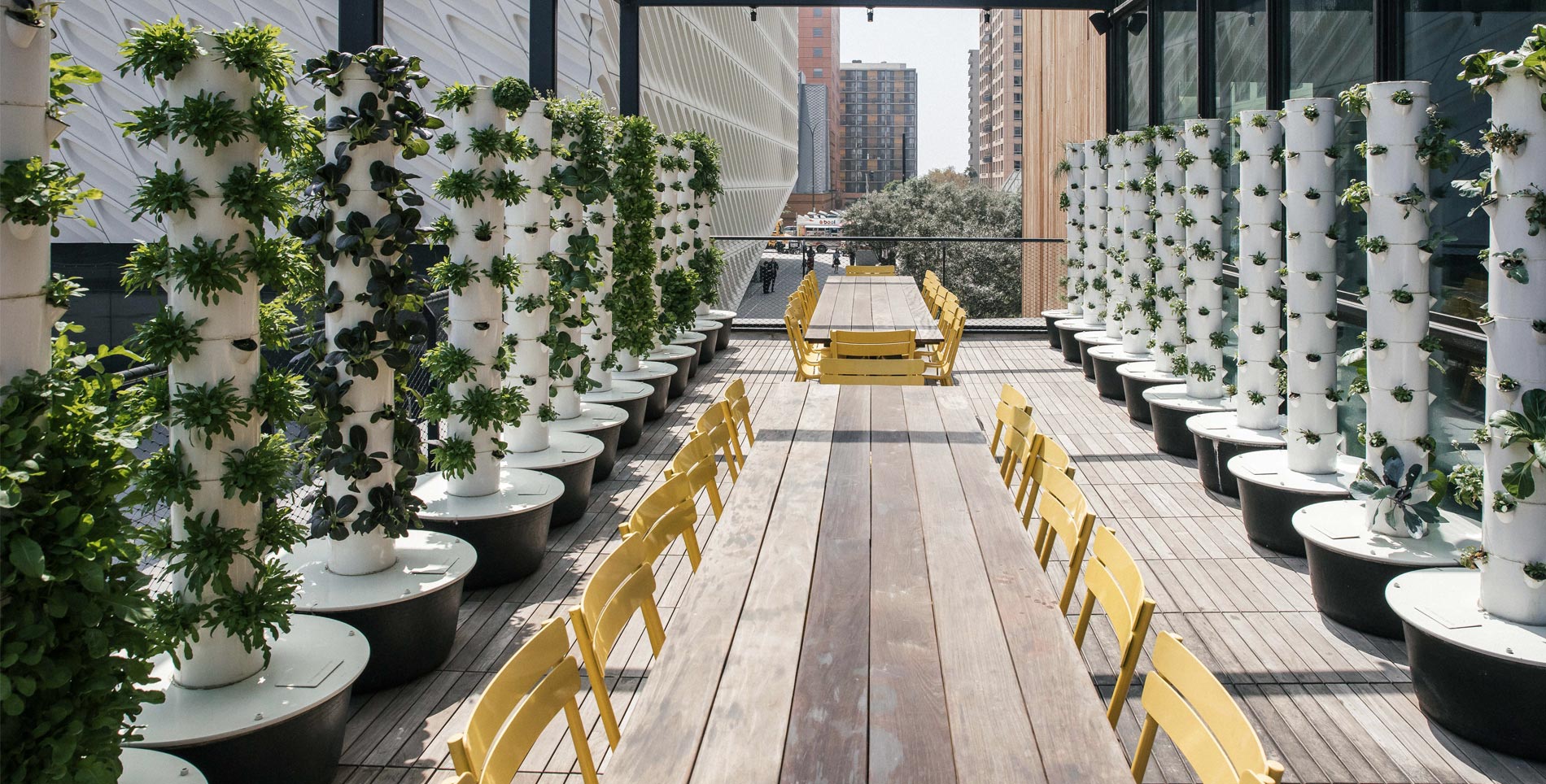

Our comments section is for members only.
Join today to gain exclusive access.